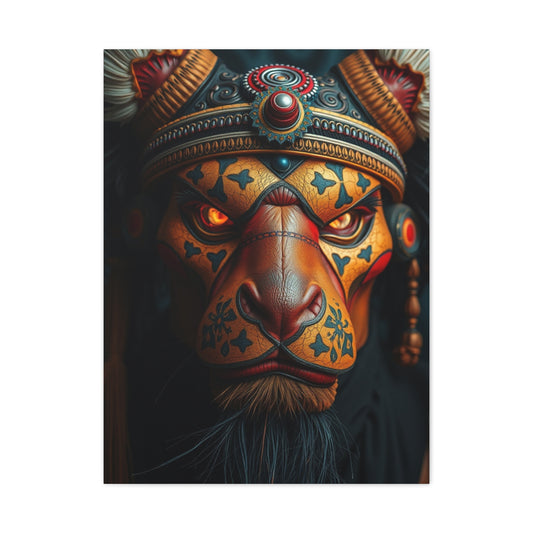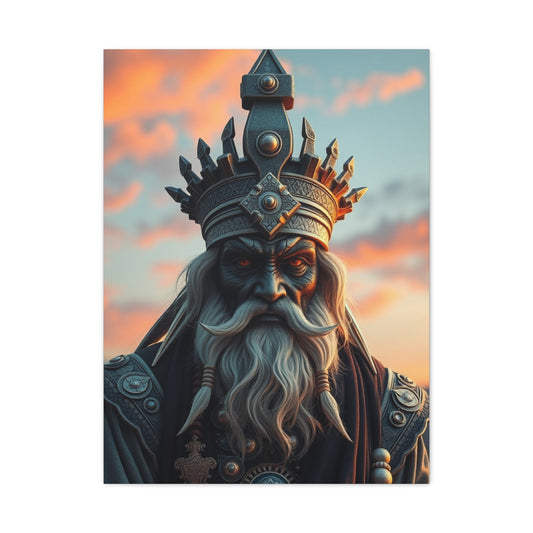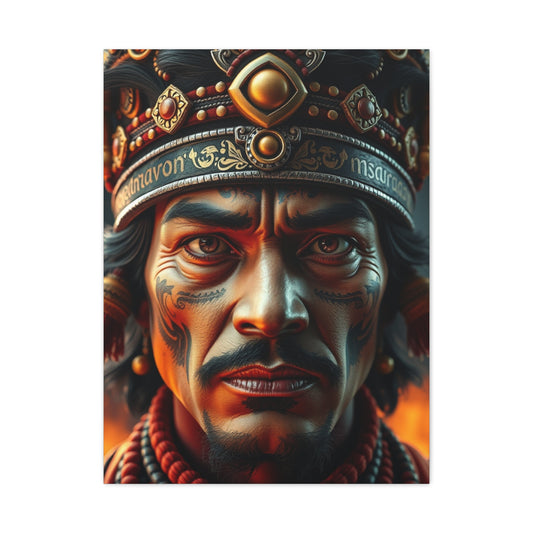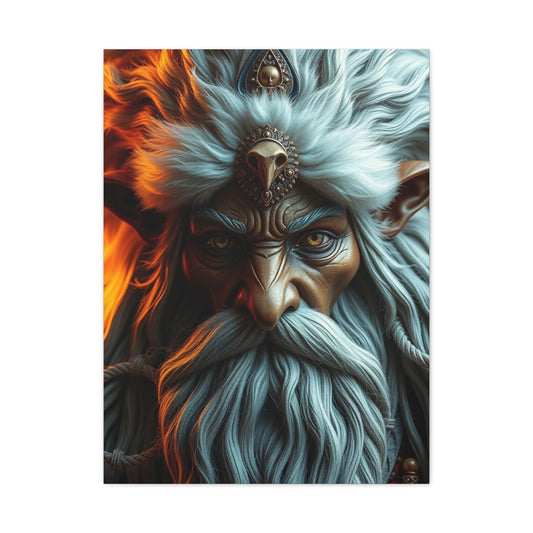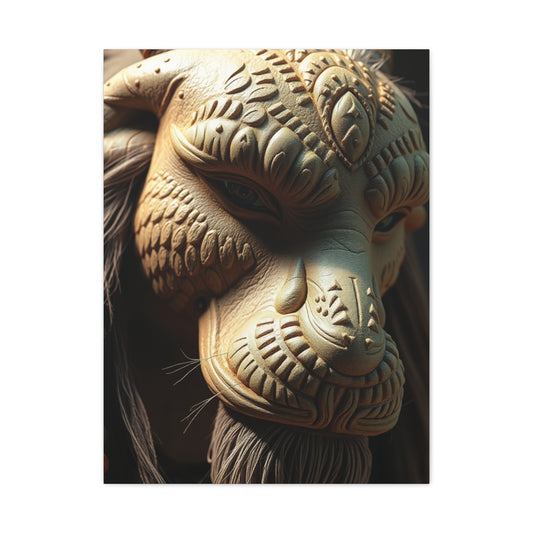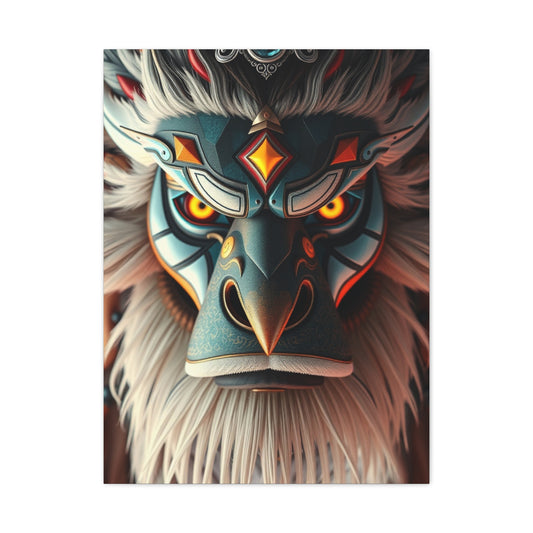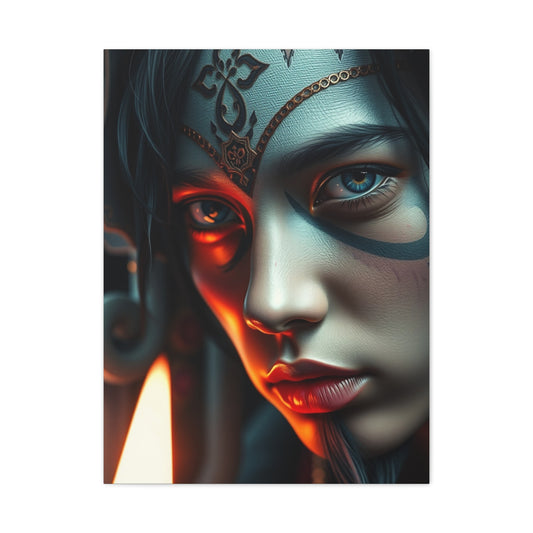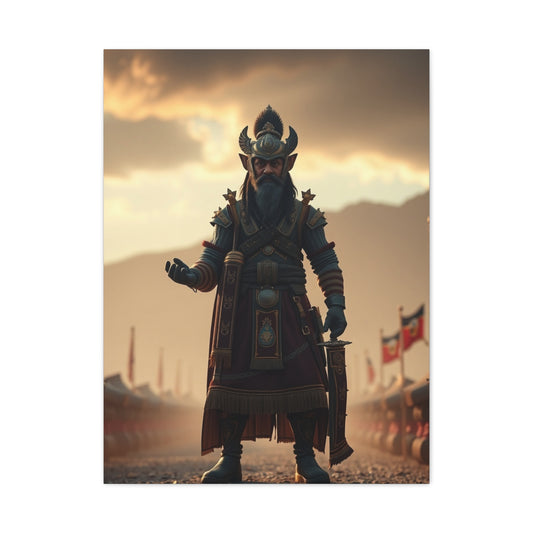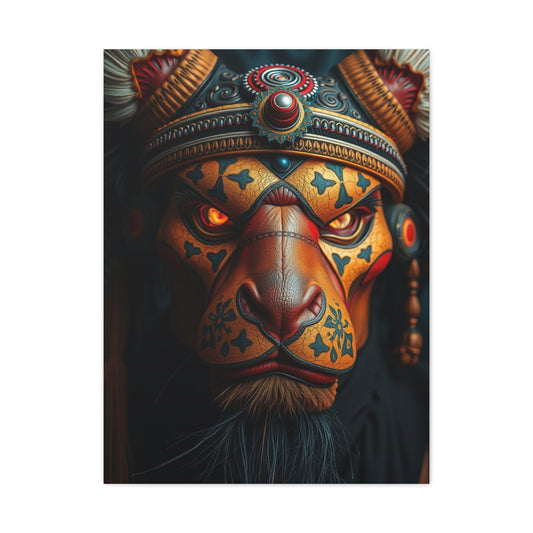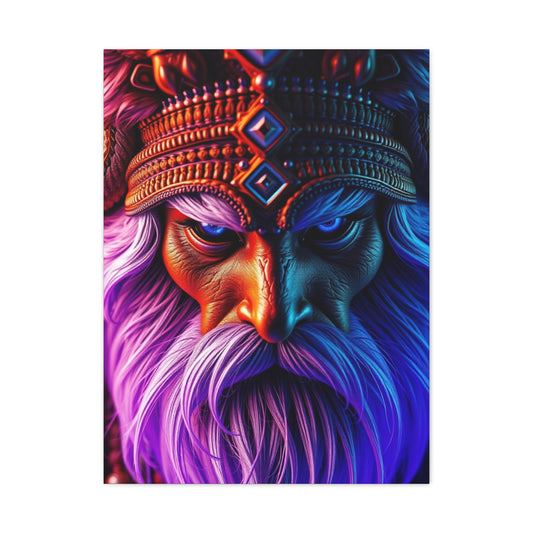Unique Hanukkah Wall Art and Luminous Decorations for Every Home
Hanukkah, often referred to as the Festival of Lights, holds a singular place in Jewish culture as a celebration of both faith and perseverance. At its core, the holiday commemorates the rededication of the Second Temple in Jerusalem following the Maccabean revolt, an event that has been immortalized through centuries of ritual, symbolism, and festivity. The essence of Hanukkah revolves around light overcoming darkness, and this theme permeates every aspect of the holiday—from its sacred ceremonies to the decorative accoutrements that adorn homes during the eight-day festival.
The physical manifestations of Hanukkah, from the radiant glow of the Menorah to the playful whirling of dreidels, serve as conduits of tradition and repositories of cultural memory. These symbols do not merely act as visual embellishments; they embody profound narratives of resilience, miracles, and spiritual continuity. In contemporary Jewish households, the interplay between classic symbols and inventive decor has created a dynamic tableau where history, religion, and artistry converge.
Decorations play an essential role in the modern observance of Hanukkah. While originally the holiday did not involve elaborate ornamentation, the contemporary aesthetic has expanded to include a rich tapestry of visual motifs, color schemes, and handcrafted items. The decorative choices, whether minimalistic or exuberant, invariably reflect the interplay of tradition and modernity, honoring both ancestral heritage and the creative impulses of the present day.
The Menorah: Centerpiece of Illumination
At the heart of Hanukkah decorations stands the Menorah, a candelabrum with nine branches, which is perhaps the most recognizable symbol of the holiday. The Menorah represents the miracle of the oil that burned for eight days despite being sufficient for only one, a story that encapsulates the enduring power of faith and divine providence. Each night, an additional candle is lit, culminating in the illumination of all eight candles alongside the central shamash, or “helper” candle. This ritual is both contemplative and celebratory, providing a tangible link to centuries of Jewish tradition.
The Menorah’s physical form is subject to remarkable variation, ranging from classical designs rendered in polished brass or silver to avant-garde interpretations crafted from glass, ceramic, or even reclaimed materials. This flexibility allows families to incorporate the Menorah into diverse interior aesthetics while maintaining its symbolic potency. A well-displayed Menorah becomes a luminous focal point within the home, its flickering light evoking a sense of sacred continuity and festive warmth.
The lighting of the Menorah is accompanied by recitations of blessings and often by the singing of traditional melodies. Each flame functions as a vessel of memory, encapsulating both historical narratives and contemporary aspirations. In some households, the Menorah is further adorned with ornamental holders, intricate drip trays, or decorative motifs that reflect local artisanal practices, thereby transforming a ritual object into a piece of expressive artistry.
Hanukkah Candles and Their Symbolism
The candles of Hanukkah, which are integral to the Menorah, carry a dual symbolism. On one hand, they commemorate the miraculous endurance of the Temple’s oil; on the other, they serve as metaphors for enlightenment, hope, and spiritual resilience. While traditional Hanukkah candles are often blue and white, symbolizing heavenly aspiration and purity, modern variations encompass a spectrum of colors and materials, from beeswax and soy to vibrant rainbow-hued waxes that reflect individual creativity.
The central shamash holds a unique role, used to ignite the other candles, reinforcing the concept of illumination as both a practical and symbolic act. The flickering flames contribute to an atmosphere of contemplative serenity, allowing family members to gather in reflective quiet or joyful celebration. The act of lighting the Menorah each night can become a meditative practice, an acknowledgment of continuity, and an affirmation of identity.
Beyond their spiritual significance, Hanukkah candles have inspired diverse artistic interpretations, ranging from hand-painted motifs to sculptural arrangements that highlight the interplay of color, shadow, and form. Some households even integrate the candles into broader table displays, combining them with complementary elements such as eucalyptus sprigs, decorative bowls, or thematic fabrics to create a multisensory holiday tableau.
Dreidels and Gelt: Playful Symbols
In addition to the Menorah and candles, dreidels and gelt are prominent fixtures in Hanukkah celebrations. The dreidel, a four-sided spinning top inscribed with Hebrew letters, is emblematic of resilience and hidden meaning. Traditionally, each letter represents a phrase encapsulating the miracle of Hanukkah, and the game associated with it serves as both entertainment and cultural reinforcement.
Dreidels are available in a variety of materials, from simple wood to metallic or glass designs, reflecting both artisanal craftsmanship and contemporary innovation. They are often displayed as decorative elements on tables, shelves, or mantels, integrating playfulness into the holiday ambiance while simultaneously reinforcing the symbolic narratives of the season. The game of dreidel can also become a familial ritual, transmitting cultural knowledge across generations in a manner that is both interactive and meaningful.
Gelt, small coins often made of chocolate, complements the dreidel by providing tangible rewards for gameplay and adding a festive flourish to holiday decor. Historically, gelt also served as real money given to children, fostering lessons in generosity, reward, and stewardship. Modern interpretations of gelt vary in size, design, and material, allowing families to blend traditional symbolism with creative expression. Together, dreidels and gelt enrich Hanukkah decorations with a sense of whimsy, historical resonance, and joyful participation.
Color Schemes and Decorative Aesthetics
The visual identity of Hanukkah is strongly associated with a blue and white color palette, a choice rooted in religious symbolism and historical tradition. Tekhelet blue, derived from ancient dyeing practices, is traditionally linked to divinity and the heavens, while white symbolizes purity and moral clarity. This combination is echoed in the tallit, the Jewish prayer shawl, and in the Israeli flag, reinforcing the colors’ enduring significance within Jewish culture.
Beyond blue and white, contemporary decorations often incorporate silver, gold, and occasionally deeper hues, creating a visually layered aesthetic that complements both traditional motifs and modern interior design. The inclusion of metallic tones or natural materials like eucalyptus introduces a tactile richness, allowing decorations to resonate on multiple sensory levels. Families may combine string lights, menorah candle holders, and symbolic ornaments to craft a cohesive and harmonious holiday environment.
Innovative decorative approaches often involve the use of natural textures, sculptural forms, or mixed media arrangements. Wreaths of eucalyptus, hand-dyed fabrics, or reflective surfaces such as glass or polished metal can transform simple motifs into visually arresting displays. Such combinations highlight the elasticity of Hanukkah decorations, where the interplay between tradition and modern creativity allows for unique, personalized interpretations that maintain symbolic integrity.
Modern Approaches to Hanukkah Decoration
In recent decades, Hanukkah decorations have evolved to encompass both indoor and outdoor elements. Homes may feature string lights, festive garlands, or illuminated representations of the Menorah, Star of David, and dreidel. These visual elements extend the festival’s celebratory spirit into public spaces, creating a sense of communal festivity and shared observance.
Indoor decoration strategies often emphasize layered visual textures, incorporating items such as decorative bowls, patterned table runners, tealight arrangements, and gold-accented flatware. These elements work together to create a cohesive and elegant holiday tableau, where each piece contributes to the overall thematic narrative. Even small additions, like color-coordinated dish towels or minimalist floral arrangements, can enhance the atmosphere, marrying functionality with aesthetic sophistication.
DIY Hanukkah decorations have also gained popularity, allowing families to engage creatively with tradition. Crafting marble Menorahs with unconventional candleholders, constructing paper flower Menorahs, or designing personalized foil trays exemplifies how contemporary makers integrate artistry, personal expression, and ritual observance. These projects encourage engagement from children and adults alike, reinforcing both familial bonds and cultural continuity.
Spiritual and Cultural Significance
Underlying the material aspects of Hanukkah decorations is a profound spiritual and cultural significance. Each element, from the lighting of the Menorah to the playful spinning of the dreidel, embodies narratives of perseverance, divine providence, and cultural identity. Decorations act as more than visual enhancements; they are vessels for storytelling, memory preservation, and intergenerational education.
The interplay of light and darkness is particularly emblematic, with the illumination of the Menorah serving as both a literal and metaphorical beacon. This motif resonates with the broader human experience, reflecting themes of hope, resilience, and renewal. By surrounding these rituals with thoughtfully curated decorative elements, families create an immersive environment that reinforces the festival’s symbolic potency.
In addition to religious significance, Hanukkah decorations facilitate social and communal engagement. Hosting festive gatherings around elaborately set tables, participating in dreidel games, and sharing traditional foods like latkes and sufganiyot combine aesthetic pleasure with shared cultural practice. The visual and sensory dimensions of the holiday thus reinforce both internal reflection and external celebration, creating a holistic festival experience.
Traditional Hanukkah Decorations
Hanukkah decorations embody centuries of cultural continuity while offering ample scope for contemporary interpretation. Traditional pieces not only enhance the festive atmosphere but also serve as tangible reminders of the holiday’s enduring symbolism. Among these, the Menorah remains the most essential, but other decorative elements such as Hanukkah candles, drip trays, dreidels, and symbolic motifs like the Star of David hold equal significance. These items collectively foster an environment that bridges historical narrative, spiritual reflection, and familial celebration.
The Menorah, often called a Hanukkah, is the quintessential symbol of Hanukkah. While its design may vary, the nine-branched candelabrum consistently conveys the miraculous story of the oil that burned for eight days. Traditional Menorahs are crafted from materials such as brass, silver, or polished wood, though modern interpretations embrace glass, ceramic, or even recycled metals. The interplay of light on these surfaces creates a dynamic visual effect, emphasizing the transformative symbolism of illumination overcoming darkness. Positioning the Menorah in a prominent location enhances both its aesthetic impact and its ceremonial significance, making it the central focal point of Hanukkah decor.
Hanukkah Candles: More Than Illumination
Hanukkah candles serve a dual function: they honor the miracle of the oil and provide a source of contemplative light. The shamash, or helper candle, occupies a central position and is used to ignite the other eight candles sequentially. Each night, the growing number of lit candles represents not only the historical miracle but also a symbolic amplification of hope, resilience, and continuity.
Candles are traditionally blue and white, reflecting divine and pure associations, but contemporary Hanukkah decor often incorporates a wider palette, including rainbow hues or metallic shades. Variations in candle material, such as beeswax or soy, influence burn time and ambiance, allowing families to create prolonged periods of warmth and reflection. In addition to their ritual purpose, candles can function as visual anchors within decorative arrangements, enhancing the interplay between symbolism, color, and spatial design in the home.
Drip Trays and Practical Elegance
A less heralded yet indispensable element of Hanukkah decoration is the drip tray. Positioned beneath the Menorah, the tray collects wax drippings, preserving surfaces while complementing the candelabrum’s aesthetic. Drip trays range from minimalist silver or brass plates to intricately patterned ceramic or glass designs. This practical addition enhances the visual coherence of the display while maintaining a neat and polished presentation.
The drip tray, while functional, can also reflect a household’s stylistic preferences. Its design may echo the geometric patterns of traditional Jewish art or embrace modern simplicity, harmonizing with the surrounding decor. The presence of a drip tray underscores the principle that utility and artistry can coexist within the context of Hanukkah, transforming a practical object into a decorative feature that subtly reinforces the festival’s visual and symbolic identity.
Dreidels and the Joy of Play
The dreidel, a four-sided spinning top, combines playfulness with cultural symbolism. Each letter inscribed on the dreidel represents a phrase reflecting the miracle of Hanukkah, transforming a simple game into an instrument of cultural transmission. The act of spinning a dreidel encourages participation from all generations, fostering a sense of communal engagement while reinforcing historical and spiritual knowledge.
Dreidels are crafted from a variety of materials, including wood, glass, and metallic alloys, and their designs range from rustic and traditional to sleek and contemporary. In addition to gameplay, dreidels are often displayed as decorative elements, strategically placed on tables, shelves, or mantels to contribute to the overall ambiance. Their presence adds a whimsical touch to Hanukkah decor, emphasizing that festivity and tradition are not mutually exclusive but rather mutually reinforcing aspects of the holiday.
Star of David Motifs and Symbolic Lighting
Star of David motifs are widely incorporated into Hanukkah decorations, often through string lights or ornamental shapes. These symbols serve as visual affirmations of Jewish identity and heritage, linking celebratory display with spiritual resonance. Star of David lights, available in a variety of colors including soft white and vibrant blue, enhance both indoor and outdoor environments, creating a warm, inviting glow that complements other decorative elements such as the Menorah and dreidels.
The integration of symbolic lighting highlights the thematic essence of Hanukkah, where illumination functions as both a literal and metaphorical agent. Light is not merely decorative; it embodies the transcendence of hope over adversity, a motif that resonates deeply within the collective memory of Jewish communities. The interplay of ambient light, candlelight, and reflective surfaces like metallic trays or glass ornaments amplifies the aesthetic and emotional impact of the holiday setting.
Natural Elements in Hanukkah Decor
Incorporating natural elements such as eucalyptus has become a popular approach to modern Hanukkah decoration. Eucalyptus leaves, with their muted green tones, offer a refreshing contrast to the traditional blue and white palette. Whether arranged in wreaths, garlands, or centerpieces, these natural accents provide texture, fragrance, and an organic aesthetic that harmonizes with both traditional and contemporary displays.
The use of natural materials fosters a tactile and sensory dimension within the decor, emphasizing the festival’s connection to cycles of life, growth, and renewal. Eucalyptus can be combined with candles, bowls, or table runners to create layered compositions that enrich the visual and olfactory experience. This approach underscores a principle central to modern Hanukkah aesthetics: the blending of symbolic, natural, and artistic elements to cultivate an environment that is both meaningful and visually captivating.
Tabletop Decorations and Functional Aesthetics
Beyond ceremonial objects, tabletop arrangements play a crucial role in Hanukkah decor. Glossy blue bowls, decorative platters, and sophisticated table runners elevate the dining experience while reinforcing thematic continuity. These items can serve dual purposes, functioning as practical vessels for serving traditional foods such as latkes or sufganiyot while simultaneously enhancing the visual harmony of the space.
Table runners featuring Hanukkah motifs—such as menorahs, dreidels, or geometric patterns—provide both structural and aesthetic cohesion, guiding the eye along the table and framing culinary presentations. Fabrics like linen or velvet introduce tactile richness and visual depth, contributing to an overall ambiance of elegance. Similarly, tealight sets distributed across the tabletop add soft, flickering illumination, complementing the Menorah while creating a warm, intimate atmosphere conducive to family gatherings and reflective contemplation.
Gold Accents and Modern Luxury
Incorporating gold accents has become increasingly prevalent in Hanukkah decoration. Brushed gold flatware, patterned serving platters, and metallic embellishments introduce a sense of luxury and sophistication, harmonizing with the traditional blue and white color scheme. These touches of opulence are balanced with symbolic and natural elements, ensuring that visual elegance does not overshadow the holiday’s deeper significance.
Gold accents also serve to enhance reflective surfaces, amplifying the effect of candlelight and creating a multidimensional visual experience. When integrated thoughtfully, these elements contribute to a sense of celebration that is both refined and spiritually resonant, illustrating the capacity for contemporary aesthetics to coexist with historical symbolism.
DIY Hanukkah Decoration Ideas
DIY projects have become a cherished component of modern Hanukkah celebrations, allowing families to engage creatively with tradition. Crafting a marble Menorah with thimble candleholders, for instance, transforms everyday materials into a contemporary, sculptural centerpiece. The juxtaposition of smooth marble and metallic thimbles creates a minimalist yet striking aesthetic, illustrating how innovation can coexist with reverence for ritual.
Another popular DIY approach involves constructing paper flower Menorahs. Each bloom represents a night of Hanukkah, allowing for a colorful and playful interpretation of tradition. This project is particularly engaging for children, fostering a hands-on connection to cultural narratives while simultaneously contributing to home decoration.
DIY foil tape serving trays, blue Shibori dish towels, and eucalyptus Star of David arrangements further exemplify the versatility of homemade decor. These projects encourage personalization, tactile engagement, and the integration of symbolic, natural, and artistic elements. Collectively, they expand the possibilities of Hanukkah decoration, allowing households to blend heritage with individual creativity.
Outdoor Hanukkah Decorations
Decorating outdoor spaces has become an important dimension of contemporary Hanukkah celebration. String lights in blue and white, illuminated menorahs, and Star of David motifs can extend the festive spirit into gardens, windows, or front porches. These installations not only enhance the visual appeal of homes but also communicate the holiday’s celebratory essence to the broader community.
Front door signs featuring menorahs, dreidels, or Stars of David welcome guests with a tangible expression of holiday cheer. Hanukkah doormats and garden flags provide functional yet decorative accents, ensuring that outdoor spaces contribute meaningfully to the overall ambiance. Inflatable decorations, such as oversized dreidels or Menorahs, offer playful and eye-catching alternatives, capturing attention while reinforcing the symbolic narratives of the holiday.
Integration of Tradition and Contemporary Aesthetics
The evolution of Hanukkah decorations reflects a broader trend of harmonizing historical reverence with contemporary aesthetics. Traditional elements like Menorahs, candles, and dreidels coexist with modern materials, textures, and design sensibilities, creating an immersive experience that is simultaneously educational, aesthetic, and celebratory.
This integration emphasizes that decoration is not merely ornamental but also a medium for storytelling, cultural continuity, and spiritual engagement. By blending classic motifs with modern design, families cultivate spaces that honor the festival’s historical significance while accommodating evolving artistic sensibilities. The result is a rich, layered environment where light, color, texture, and symbolism converge to create a multisensory celebration of Hanukkah.
Simple and Elegant Hanukkah Decorations
While Hanukkah is rich in traditional symbolism, many families embrace minimalistic approaches to decoration, focusing on elegance and subtlety rather than opulence. Simple Hanukkah decorations create a refined environment that underscores the spiritual and cultural significance of the holiday. This approach emphasizes clarity, balance, and cohesion, allowing symbolic elements like the Menorah, candles, and Star of David motifs to resonate without overwhelming the space.
Minimalist décor often relies on a restrained color palette, predominantly blue and white, with occasional accents of silver or gold. These combinations evoke purity, serenity, and divine inspiration while providing visual consistency across different areas of the home. Eucalyptus sprigs, natural wood elements, and glass accents introduce tactile diversity and organic warmth. Such understated choices demonstrate that sophistication and tradition can coexist seamlessly within Hanukkah decorations.
Tabletop Arrangements and Functional Beauty
The dining table serves as a central locus of Hanukkah celebration, where decorative arrangements can combine visual appeal with practical utility. Tabletop decorations such as patterned runners, glossy bowls, and tealight sets enhance the ambiance while providing functionality for family meals and festive gatherings.
Table runners featuring geometric patterns, menorahs, or Stars of David establish a coherent thematic foundation for the tabletop. The interplay between color, pattern, and material creates a layered aesthetic that guides the viewer’s eye and frames culinary displays. Velvet or linen fabrics introduce texture, softening the visual presentation and imparting a sense of tactile richness to the dining environment.
Blue glossy bowls are both decorative and practical. They are ideal for presenting traditional Hanukkah treats such as latkes, sufganiyot, or nuts, adding vibrancy to the table while reinforcing the holiday’s symbolic color scheme. Grouping these bowls with candles or small ornamental objects enhances depth and creates a visually harmonious composition.
Tealight sets offer another dimension of elegance. Arranged in glass holders or scattered across the tabletop, their flickering light adds warmth and intimacy, complementing the illumination from the Menorah. By strategically placing tealights alongside other decorative objects, households can craft dynamic, multilevel arrangements that are visually captivating and spiritually resonant.
Incorporating Gold Accents
Gold accents have become increasingly popular in modern Hanukkah decoration. Subtle touches, such as brushed gold flatware, patterned serving platters, or metallic candleholders, introduce a sense of refinement and festivity. These elements interact with candlelight, creating reflective surfaces that amplify illumination and add visual depth.
Gold accents work harmoniously with the traditional blue and white palette. When paired with natural materials such as eucalyptus or wooden elements, they provide a sophisticated contrast, blending opulence with grounded textures. The thoughtful inclusion of metallic tones ensures that modern elegance complements rather than overshadows traditional symbolism, reinforcing both aesthetic cohesion and cultural resonance.
DIY and Personalized Decorations
DIY Hanukkah decorations allow families to infuse personal creativity into their festive environment. Crafting personalized Menorahs, decorative trays, or Star of David ornaments provides opportunities for intergenerational collaboration while reinforcing cultural narratives. These projects enhance the celebratory atmosphere and create keepsakes that can be reused year after year.
A marble Menorah with thimble candleholders offers a minimalist, sculptural aesthetic. Its smooth surface and metallic accents produce a modern interpretation of a traditional ritual object, combining functionality with artistry. Similarly, paper flower Menorahs can add vibrancy and whimsy, representing each night of Hanukkah with a unique floral bloom. These projects encourage family participation while expanding the visual and symbolic dimensions of Hanukkah decor.
Foil tape serving trays provide a metallic shimmer to table arrangements, reflecting candlelight and complementing other decorative elements. DIY Shibori dish towels, dyed in blue patterns on white fabric, introduce handmade elegance that aligns with the holiday’s color scheme. Eucalyptus Star of David arrangements add a naturalistic, minimalist touch, reinforcing both the organic and spiritual aspects of celebration.
Lighting as Decoration
Lighting plays a pivotal role in Hanukkah décor beyond the ceremonial Menorah. String lights, LED candles, and Star of David motifs contribute to a festive and contemplative ambiance. The interplay between soft illumination and reflective surfaces enhances the perception of space and creates a serene, inviting environment.
String lights, whether in cool white, vibrant blue, or metallic hues, can be draped over mantels, windows, or staircases. Their gentle glow complements the flicker of Hanukkah candles, producing layers of light that transform a room into a sanctuary of celebration. Lighting arrangements also highlight other decorative elements, drawing attention to table arrangements, centerpieces, and symbolic ornaments.
The symbolic and aesthetic importance of light in Hanukkah decoration cannot be overstated. Light embodies hope, perseverance, and divine presence, serving as both an artistic and spiritual medium. By integrating multiple sources of illumination, families create a dynamic, immersive environment that reinforces the festival’s core messages.
The Role of Natural Elements
Natural materials, particularly eucalyptus, have become central to modern Hanukkah decoration. Eucalyptus sprigs, garlands, or wreaths introduce an organic texture and muted coloration that balances the brightness of blue, white, and metallic tones. Their presence evokes a sense of calm and continuity, linking seasonal celebration with natural beauty.
Incorporating natural elements fosters a holistic decorative approach. Leaves, branches, or other botanical items can be combined with candles, bowls, and other tabletop elements to create a cohesive environment that is both visually engaging and spiritually meaningful. The sensory qualities of natural materials—scent, texture, and subtle color variations—enhance the overall ambiance, creating a serene yet festive atmosphere.
Combining Tradition with Modern Aesthetics
Modern Hanukkah decoration often involves harmonizing traditional motifs with contemporary aesthetics. Classic elements such as Menorahs, dreidels, and Star of David ornaments coexist with innovative designs, natural materials, and metallic accents. This approach allows for personalized expression while retaining the holiday’s symbolic integrity.
Decorative arrangements can balance minimalism with elegance, combining understated forms with subtle flourishes of color, texture, or reflective surfaces. The interplay of light and shadow, pattern and simplicity, creates a multidimensional visual environment. By carefully curating the spatial and aesthetic relationships between objects, households can construct settings that honor both historical continuity and contemporary taste.
Centerpieces and Spatial Composition
Centerpieces are a critical component of Hanukkah décor, providing visual anchors for dining tables, mantels, or other focal areas. Arrangements may include Menorahs, candles, bowls, and small ornaments organized with attention to scale, proportion, and color harmony. Layering elements of different heights, textures, and materials creates depth, enhancing the overall visual impact.
Centerpieces may incorporate thematic variations, such as floral accents, metallic trays, or symbolic motifs, producing unique interpretations while maintaining a cohesive aesthetic. Their composition communicates a sense of care, intentionality, and celebration, reflecting both artistic sensibility and cultural awareness. Centerpieces act as focal points for family gatherings, reinforcing the experiential and communal aspects of Hanukkah.
Outdoor Decoration Strategies
Extending Hanukkah décor outdoors fosters communal engagement and amplifies the festival’s visual presence. Blue and white string lights, illuminated menorahs, and symbolic motifs such as Stars of David enhance windows, porches, and gardens. Outdoor decorations contribute to a broader sense of celebration, creating a welcoming and festive environment for both residents and neighbors.
Decorative elements like front door signs, garden flags, or inflatable Menorahs and dreidels provide layers of visual interest and playful energy. These items serve as both ornamental and communicative devices, signaling the joyous observance of Hanukkah while complementing indoor arrangements. The thoughtful selection and placement of outdoor decorations can transform exterior spaces into extensions of the indoor celebration, reinforcing continuity, visibility, and communal resonance.
Integrating Sensory and Symbolic Dimensions
Successful Hanukkah decoration involves more than visual appeal; it engages multiple senses and conveys symbolic meaning. Candlelight introduces warmth and motion, eucalyptus provides fragrance and tactile texture, and color schemes communicate cultural symbolism. The combination of these elements produces a holistic sensory experience that deepens the celebratory and contemplative aspects of the festival.
Incorporating both traditional and modern elements enhances this experience. Historical motifs anchor participants in ritual memory, while innovative arrangements encourage creative engagement and personalization. The interplay between sensory stimuli and symbolic resonance fosters a festive environment that is intellectually, aesthetically, and spiritually enriching.
Practical Considerations for Elegant Decor
When designing simple yet sophisticated Hanukkah decorations, practical considerations are essential. Items such as drip trays, sturdy candle holders, and functional tableware ensure that aesthetic choices are compatible with daily use and ritual practices. Thoughtful planning allows households to achieve visual harmony without compromising the ceremonial aspects of the holiday.
Reusability and adaptability are also important. Many families curate decorations that can be rearranged, layered, or repurposed across different rooms or years, reducing waste while maintaining aesthetic freshness. By prioritizing both beauty and functionality, households cultivate spaces that are visually compelling, culturally meaningful, and logistically feasible.
Innovative DIY Hanukkah Decorations
DIY Hanukkah decorations provide an opportunity for families to merge creativity with tradition, producing distinctive items that enhance the festive atmosphere while maintaining cultural and symbolic integrity. Crafting personalized decor fosters intergenerational collaboration, enabling children and adults alike to engage with the narratives and rituals of Hanukkah. From Menorahs to tabletop arrangements, DIY projects allow households to experiment with materials, colors, and textures, producing pieces that are both visually striking and meaningful.
A marble Menorah with thimble candleholders exemplifies a minimalist yet sculptural approach. By combining smooth marble with metallic thimbles, families create a contemporary centerpiece that simultaneously serves ritual purposes. The contrast between hard stone and soft metallic gleam produces an aesthetic resonance, allowing light from the candles to reflect subtly across surrounding surfaces. This juxtaposition of material textures illustrates the potential of modern interpretation within a historically rooted symbol.
Paper Flower Menorahs
Paper flower Menorahs introduce a whimsical, artistic dimension to Hanukkah décor. Each bloom can represent one of the eight nights, creating a visually vibrant display that transforms the Menorah into a dynamic piece of art. Floral arrangements may incorporate a variety of paper textures, colors, and folding techniques, producing three-dimensional layers that enrich the visual narrative of the holiday.
These Menorahs are particularly engaging for children, promoting tactile involvement, creativity, and cultural learning. The process of constructing and arranging the flowers reinforces understanding of Hanukkah traditions while adding a playful and colorful element to home décor. The final display is a striking combination of tradition, artistry, and intergenerational participation.
DIY Foil Tape Serving Trays
Foil tape serving trays provide a metallic shimmer to festive table arrangements, reflecting candlelight and enhancing overall visual appeal. By adhering strips of gold or silver tape onto a basic serving tray, families can craft bespoke pieces that combine practicality with decorative elegance.
These trays are versatile, functioning as platforms for Menorahs, bowls of traditional foods, or tealight arrangements. The reflective surfaces amplify ambient light, creating a luminous tableau that reinforces Hanukkah’s thematic emphasis on illumination. The simplicity of the technique allows for experimentation with patterns, colors, and geometric designs, making the creation process accessible while producing impactful visual results.
Blue Shibori Dish Towels
Shibori, a traditional Japanese tie-dye technique, can be employed to produce unique blue-toned dish towels suited for Hanukkah décor. The hand-dyed patterns produce a one-of-a-kind effect, combining organic irregularity with deliberate design. These towels can be displayed in the kitchen, used to serve baked treats, or incorporated into tabletop arrangements, introducing a tactile and artistic dimension to everyday items.
The resulting shades of blue harmonize with the traditional Hanukkah palette, while the handmade process emphasizes personalization and craftsmanship. Shibori dish towels exemplify how functional household items can also serve as decorative elements, seamlessly blending utility, artistry, and cultural symbolism.
Eucalyptus Star of David Arrangements
Eucalyptus, shaped into the iconic Star of David, provides a naturalistic yet contemporary decorative element. Using floral wire to secure branches into the star shape, households create a minimalist and fragrant symbol that can function as a wall hanging, centerpiece, or door decoration.
This approach integrates natural textures with traditional symbolism, producing a fresh aesthetic that emphasizes both organic beauty and ritual significance. The gentle green tones of eucalyptus leaves complement blue, white, and metallic accents, balancing color and texture while enriching the sensory experience of Hanukkah celebrations.
Incorporating Natural and Sustainable Materials
Modern Hanukkah decoration increasingly embraces sustainability, integrating natural or repurposed materials to reduce environmental impact while enhancing aesthetic depth. Wood, metal, glass, and botanicals offer textural diversity, allowing households to craft layered arrangements that engage sight, touch, and occasionally scent.
Sustainable decor also encourages creativity in sourcing and adapting materials. Items such as reclaimed wood Menorah bases, recycled metal candleholders, or repurposed glass jars for tealights provide distinctive visual effects while reflecting environmental consciousness. This approach reinforces the idea that celebration can coexist with mindful stewardship, aligning aesthetic beauty with ethical values.
Creative Use of Color and Texture
Color and texture remain central to crafting compelling Hanukkah decorations. While traditional blue and white tones are dominant, complementary metallics, natural greens, and soft neutrals enrich the visual tapestry. Combining reflective surfaces, matte textures, and tactile materials creates a multidimensional experience, allowing each element to contribute uniquely to the overall ambiance.
Layering textures—such as combining metallic trays with linen runners, glass candleholders, and eucalyptus sprigs—produces depth and visual interest. Patterns, gradients, and hand-crafted finishes enhance the sense of artistry while maintaining coherence with traditional symbols. Thoughtful color and texture choices emphasize the holiday’s themes of light, purity, and spiritual continuity, reinforcing both aesthetic and symbolic dimensions.
Integrating Modern Technology
Technological innovation has expanded possibilities for Hanukkah decoration. LED candles, programmable string lights, and battery-operated Menorahs provide safe, flexible alternatives for households with young children or pets. These elements can be arranged creatively to maintain traditional symbolism while adapting to contemporary living environments.
Smart lighting systems allow for programmable sequences that can enhance the ceremonial progression of candle lighting, producing dynamic visual effects. The use of subtle electronic illumination complements natural candlelight, creating a layered atmosphere that enhances contemplation, ritual engagement, and festive ambiance.
Tabletop Design and Layering
Modern Hanukkah décor emphasizes layered tabletop arrangements to balance visual interest with ritual function. Menorahs, tealights, bowls, and symbolic ornaments can be positioned strategically, using height, shape, and color contrast to create a dynamic composition.
Decorative layering can include alternating textures, such as glass and ceramic, matte and metallic finishes, or organic and structured elements. These combinations enhance the interplay of light and shadow, highlight the symbolism of each item, and produce an immersive visual experience. Layered design allows for both functionality and aesthetic sophistication, ensuring that tables are both celebratory and practical for dining and ritual purposes.
Outdoor Creative Decoration Ideas
Expanding Hanukkah décor outdoors provides opportunities for playful, imaginative arrangements. Inflatable Menorahs, dreidels, and symbolic garden flags capture attention and create a festive exterior environment. These elements communicate the celebratory essence of Hanukkah to the broader community while complementing interior decorations.
Outdoor string lights, particularly in blue and white, add depth and illumination, framing windows, porches, or staircases. Strategic placement ensures visual cohesion with the home’s architecture and interior décor. Integrating natural elements such as potted eucalyptus or ornamental shrubs reinforces the connection between indoor and outdoor arrangements, producing a harmonious festive environment.
Combining Tradition with Contemporary Creativity
DIY and modern decorations exemplify the synthesis of traditional symbolism with contemporary artistic sensibilities. Menorahs, dreidels, and Star of David motifs coexist with innovative materials, color experiments, and layered textures. This blending allows for personalized expression while maintaining the cultural and spiritual essence of the holiday.
Households can curate cohesive environments by combining traditional objects with handmade or repurposed items, natural materials, and technological enhancements. This approach underscores the evolving nature of Hanukkah celebration, highlighting the capacity for creative interpretation without diminishing the historical or ritual significance of symbolic objects.
Sensory Enrichment Through Decoration
Decorations contribute not only visually but also through multisensory engagement. Candlelight produces movement and warmth, eucalyptus adds fragrance, and textured surfaces invite tactile exploration. Sound, in the form of the spinning dreidel or the subtle rustle of garlands, further enriches the environment.
Multisensory engagement enhances the celebratory and contemplative dimensions of Hanukkah. Households that combine visual, tactile, olfactory, and auditory elements create immersive experiences that resonate with participants on multiple levels. This holistic approach deepens the connection to ritual, heritage, and communal celebration, amplifying the meaningfulness of the holiday environment.
DIY Decoration Projects for Families
Family-centered DIY projects encourage active participation, cultural learning, and creativity. Simple yet effective ideas include creating custom Menorah bases from recycled materials, hand-decorating dreidels with paint or metallic accents, or designing thematic centerpieces for dining tables.
These projects offer both educational and aesthetic value, allowing participants to explore materials, patterns, and forms while learning about Hanukkah traditions. Collaborative activities strengthen family bonds, transmit cultural knowledge, and produce lasting decorative objects that can be reused annually, reinforcing both continuity and innovation in Hanukkah celebration.
Integrating Hanukkah Decorations into Daily Life
Hanukkah decorations serve not only as festive embellishments but also as a means to integrate tradition and celebration into daily life. The Menorah, candles, dreidels, and symbolic motifs are more than decorative objects—they are conduits of memory, faith, and communal identity. Placing these elements thoughtfully in living spaces encourages reflection, storytelling, and interaction, making the holiday experience immersive and meaningful.
The daily lighting of the Menorah offers a rhythm that connects households to ritual while harmonizing with contemporary schedules. Positioning the Menorah in communal areas such as dining rooms or living rooms fosters shared experiences, allowing all members of the family to participate in the ceremonial lighting. Accompanying recitations, blessings, and songs transform each evening into a multisensory event, intertwining visual beauty with spiritual reflection.
Holistic Home Decoration Strategies
Creating a cohesive Hanukkah environment involves balancing symbolic elements, functional objects, and aesthetic considerations. Indoor spaces can be arranged to highlight Menorahs, candles, and Star of David motifs while incorporating natural accents like eucalyptus, textured fabrics, and metallic highlights. These layers produce a refined visual narrative, linking traditional symbolism with modern design sensibilities.
Layering is essential for depth and visual intrigue. Tablescapes can combine patterned runners, glossy bowls, and tealight sets with Menorahs as focal points, producing harmony between functionality and festivity. Shelves and mantels can feature small dreidels, symbolic ornaments, or framed holiday artwork, integrating tradition into everyday home spaces. The deliberate arrangement of objects enhances both visual appeal and experiential engagement, transforming living areas into immersive festival environments.
Outdoor Decoration and Community Engagement
Extending Hanukkah décor outdoors expands the holiday’s presence and encourages communal interaction. Illuminated Menorahs, blue-and-white string lights, Star of David motifs, and garden flags create a festive exterior environment. Inflatable dreidels and Menorahs add playful and attention-grabbing elements, inviting neighbors and passersby to share in the celebratory spirit.
Front doors and entryways can serve as symbolic thresholds. Seasonal signs, doormats, or wreaths featuring traditional symbols communicate hospitality and cultural pride. Outdoor decorations become extensions of indoor arrangements, maintaining thematic continuity while enhancing the visibility and social dimension of the holiday. Thoughtful placement of lights and decorations ensures aesthetic cohesion with architectural elements, blending celebration with functional design.
Enhancing Ritual Experience Through Decoration
Decorative elements can enhance ritual engagement by providing contextual ambiance and visual focus. Menorahs positioned centrally during candle lighting emphasize their symbolic importance, while complementary items such as tealights, trays, or ornamental objects create layered illumination. This layering amplifies the theme of light overcoming darkness, reinforcing the spiritual resonance of each nightly ritual.
Tabletop arrangements and centerpieces can also augment ritual experience. Incorporating symbolic motifs such as dreidels, Star of David ornaments, or color-coordinated bowls strengthens the narrative framework of the holiday. Surrounding ceremonial objects with aesthetically curated arrangements allows participants to engage visually and spatially with tradition, making the ritual both contemplative and celebratory.
Integrating Food and Festivity
Traditional foods such as latkes, sufganiyot, and gelt naturally complement Hanukkah décor. Table settings that harmonize with the holiday’s color palette—blue, white, and metallic accents—enhance the visual and sensory experience of festive meals. Serving dishes, platters, and bowls can function both as practical items and as integral components of decorative arrangements, linking culinary celebration with aesthetic expression.
Centerpieces combining food with symbolic objects—such as placing a small Menorah amidst bowls of latkes or arranging gelt in decorative containers—create a layered narrative of sustenance, ritual, and festivity. Such arrangements emphasize that Hanukkah is simultaneously a celebration of light, family, and shared abundance, blending practical and symbolic considerations seamlessly.
Lighting Techniques and Atmosphere
Lighting is central to both ritual and decoration. The flicker of Menorah candles creates warmth, while supplemental elements such as tealights, string lights, and LED accents enhance the visual environment. Strategic placement of lights can produce layered illumination, emphasizing depth, contrast, and symbolic resonance.
Thematic lighting can also highlight focal points such as centerpieces, tablescapes, or symbolic motifs. Blue-and-white hues, metallic reflections, and natural textures interplay with light to create a multifaceted sensory experience. By coordinating light sources, households can cultivate an atmosphere that is both contemplative and celebratory, aligning visual impact with spiritual intent.
Harmonizing Tradition with Modern Creativity
Modern Hanukkah décor demonstrates the potential for harmonizing historical symbols with contemporary aesthetics. Classic elements such as Menorahs, dreidels, and Star of David motifs coexist with DIY creations, innovative materials, and natural accents. This synthesis allows for individual expression while maintaining respect for ritual and cultural heritage.
Families can explore patterns, textures, and arrangements that resonate with their personal taste while honoring traditional symbolism. Layered compositions, reflective surfaces, natural materials, and handmade elements produce a balanced aesthetic that is both visually captivating and culturally meaningful. The fusion of old and new reinforces the adaptive and evolving nature of the Hanukkah celebration.
Outdoor-Indoor Continuity
Creating continuity between indoor and outdoor spaces enhances the immersive quality of Hanukkah décor. For example, string lights and illuminated symbols outside can echo interior arrangements, producing a cohesive thematic experience. Incorporating natural materials such as eucalyptus garlands, wreaths, or potted plants outdoors mirrors indoor organic elements, creating harmony between visual, tactile, and spatial dimensions.
Outdoor continuity also strengthens communal visibility, signaling the celebratory nature of the festival to neighbors and passersby. Harmonizing color schemes, motifs, and lighting between indoor and outdoor spaces fosters a sense of wholeness, ensuring that every aspect of the home participates in the thematic narrative of Hanukkah.
Seasonal and Sensory Coordination
Decorative strategies benefit from coordinating with seasonal elements such as winter light, textures, and climate. Cool blues and whites harmonize with natural light during the winter season, while metallic and reflective accents amplify ambient illumination. Natural scents from eucalyptus, candles, or greenery introduce olfactory dimensions that enhance immersion and atmosphere.
Sensory coordination encourages households to consider the interaction of sight, touch, and smell in decoration. Layering textures, alternating reflective and matte surfaces, and integrating organic components produce an environment that is both aesthetically and experientially compelling. This approach transforms Hanukkah from a visual celebration into a holistic multisensory experience.
Comprehensive Tabletop Presentation
The tabletop can serve as a microcosm of the entire decorative scheme. Combining Menorahs, tealight sets, bowls of treats, symbolic motifs, and layered textures produces an integrated and immersive focal point. Coordinating color schemes, materials, and arrangements reinforces thematic continuity and narrative coherence.
Centerpieces can incorporate diverse elements, including candles, natural accents, and handmade ornaments. Careful positioning enhances visual hierarchy, guiding attention to ritual objects while supporting aesthetic balance. The tabletop becomes both functional and symbolic, bridging celebration, family interaction, and cultural observance in a single, cohesive presentation.
Festive Ambiance and Celebration Flow
Decorations contribute to the flow of celebration by structuring space, guiding focus, and creating rhythm. Strategic placement of focal elements such as Menorahs, centerpieces, and lighting facilitates movement and interaction within the home, producing an intuitive flow that supports both ritual and social engagement.
Outdoor elements complement indoor arrangements, establishing thematic continuity and enhancing the overall festive atmosphere. Lighting, color, and symbolic motifs serve as navigational and emotional cues, reinforcing the narrative arc of the holiday. The combined effect is an environment that is visually harmonious, spiritually resonant, and socially inviting.
Cultural and Spiritual Resonance
Every element of Hanukkah decoration—from Menorahs and dreidels to tabletop arrangements and outdoor displays—serves as a vessel for cultural memory and spiritual meaning. The interplay of tradition, personal creativity, and sensory engagement strengthens the connection to heritage, family, and communal identity.
Decorative choices reinforce core themes of Hanukkah: light overcoming darkness, resilience, hope, and faith. By integrating symbolic motifs with aesthetic considerations, households cultivate a holistic environment that celebrates history, ritual, and contemporary expression. This resonance ensures that the holiday remains meaningful, visually compelling, and experientially rich.
Conclusion
Hanukkah decorations beautifully weave together tradition, creativity, and celebration, creating spaces that honor both ritual and family. Central elements like the Menorah, candles, and dreidels serve as enduring symbols of light, faith, and resilience, while modern interpretations, DIY projects, and natural accents allow households to personalize and enrich the holiday experience. Layered arrangements, from tabletop centerpieces to outdoor displays, harmonize visual, tactile, and sensory elements, creating immersive environments that invite reflection, joy, and communal engagement. The thoughtful use of color, texture, and illumination enhances both aesthetic appeal and spiritual resonance, ensuring that every decorative choice contributes meaningfully to the festival. By blending historical symbolism with contemporary creativity, families cultivate Hanukkah spaces that are visually captivating, emotionally warm, and culturally significant, celebrating the miracles, traditions, and togetherness that define the Festival of Lights. This holistic approach transforms decoration into a vessel of memory, expression, and festivity.

